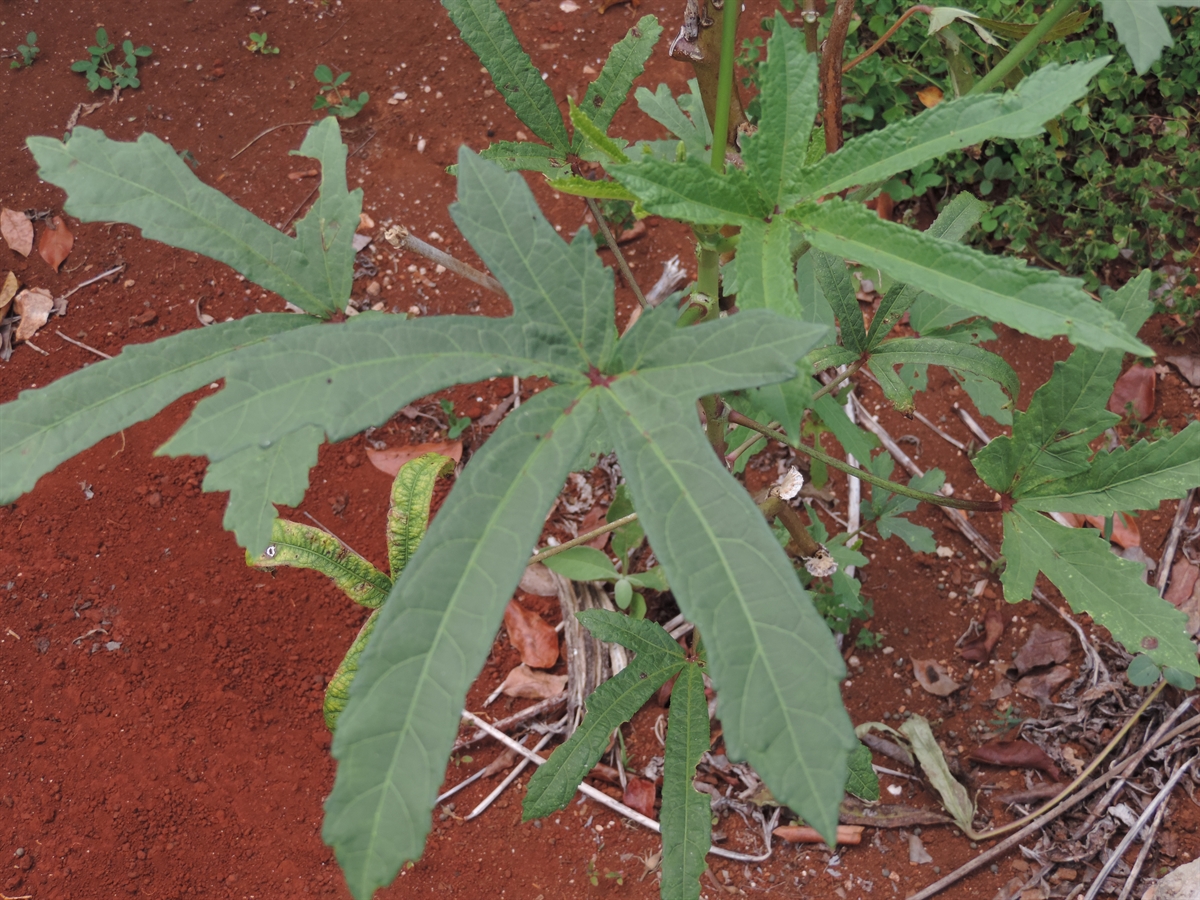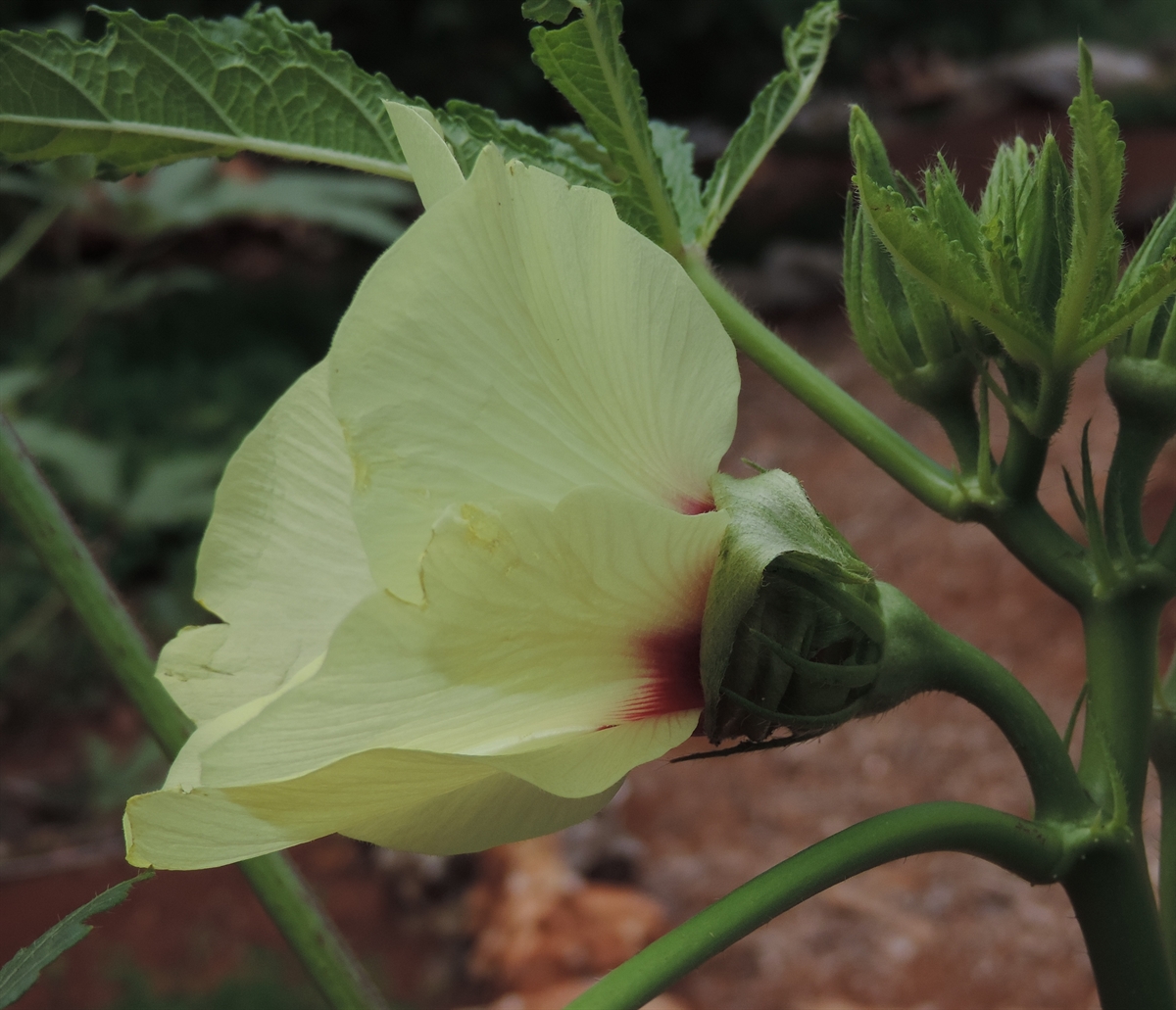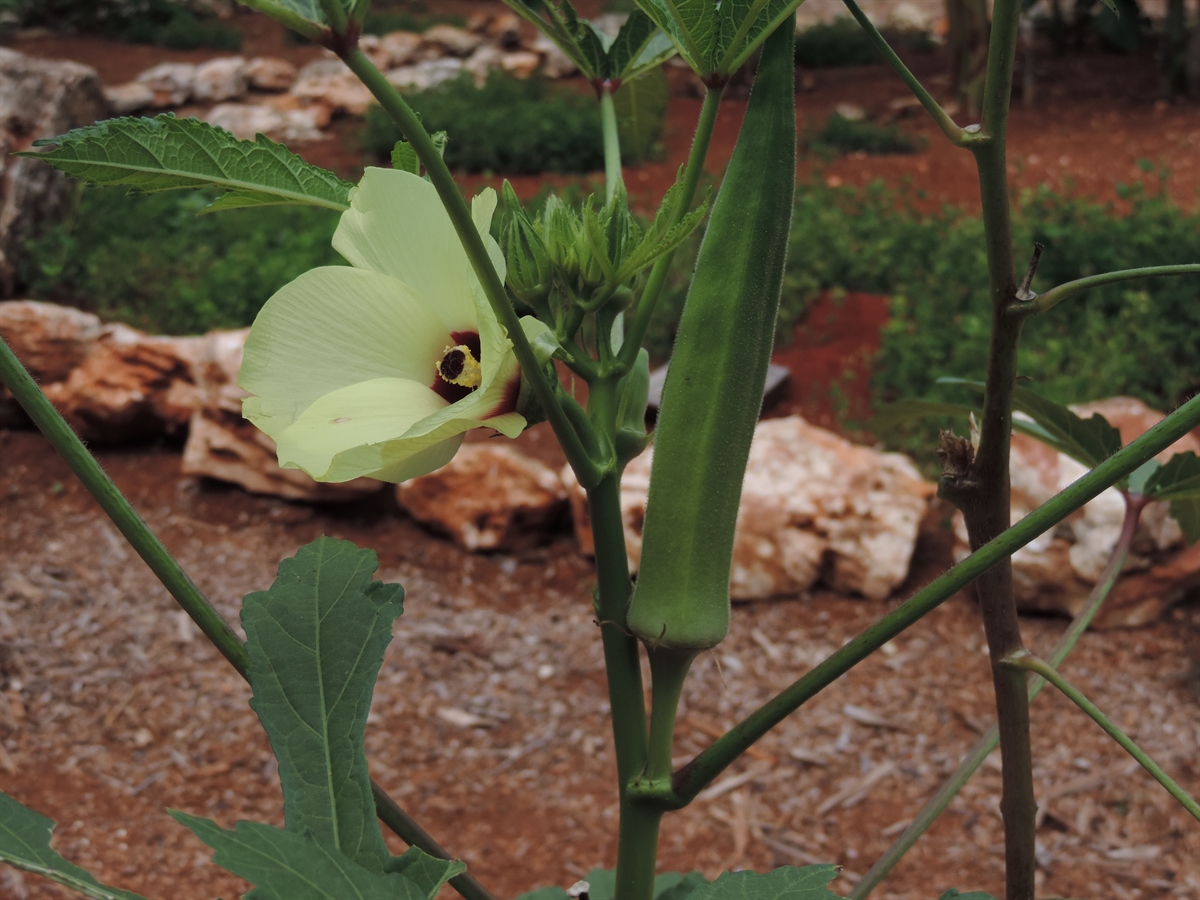Habit: Abelmoschus esculentus grows as an annual to 2 m in height with succulent stems. The leaves are arranged alternately, orbicular to palmatifid lobed, to 25 cm in length, with a serrate leaf margin and an acute leaf apex. There are stipules to 1.5 cm in length. The leaves have pubescence.
The complete, perfect, actinomorphic flowers are solitary terminally and axillarily. Flowers subtended by linear bracts that are fused at the base to form a shallow cup. The calyx has 5 half fused pubescent green sepals. The corolla has 5, fused to the base of the staminal column, yellow with a purple center, petals. There are numerous stamens fused together around the style in a column. The ovary is superior with numerous locules and numerous seeds. The fruit is has 5 locules and is a pubescent, elongate, edible, loculicidal capsule.
Habitat: Abelmoschus esculentus grows in sandy Human Altered environments (farms).
Distribution: Abelmoschus esculentus is NOT native to the Lucayan Archipelago. It is native to the Indian subcontinent and west Asia but now grows throughout the tropical and pan tropical regions of the world as a food crop.
Medicinal/Cultural/Economic usage: Abelmoschus esculentus is not known to be used medicinally in the Bahamas.
The fruits are edible raw or cooked.




